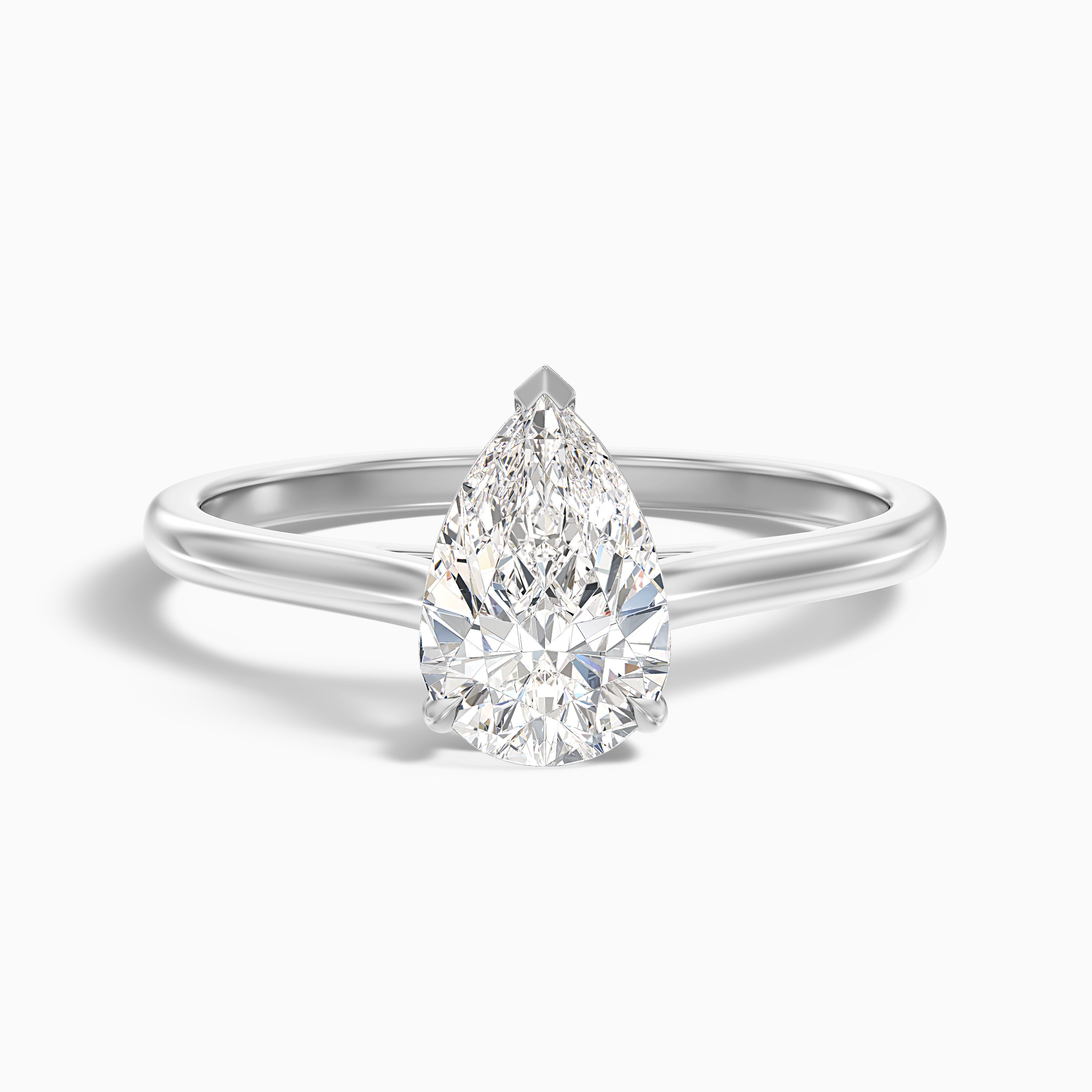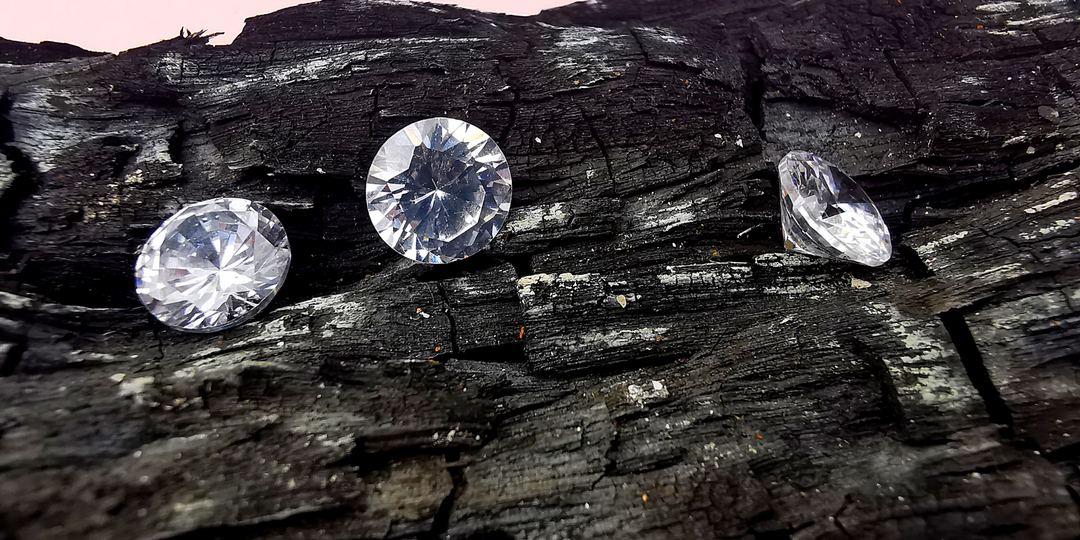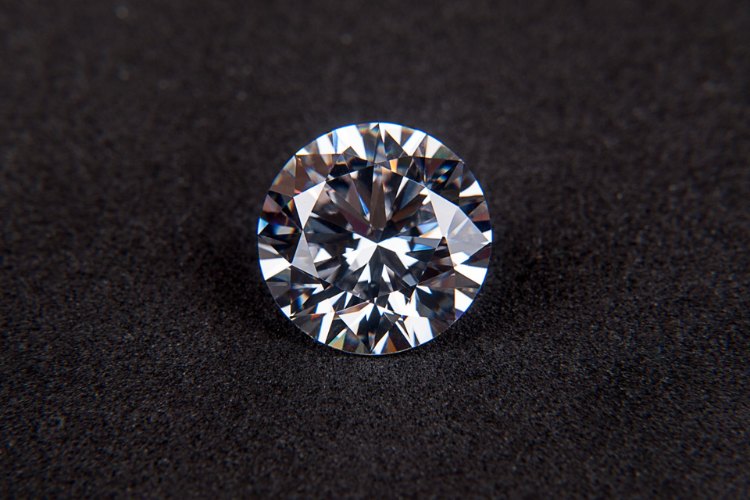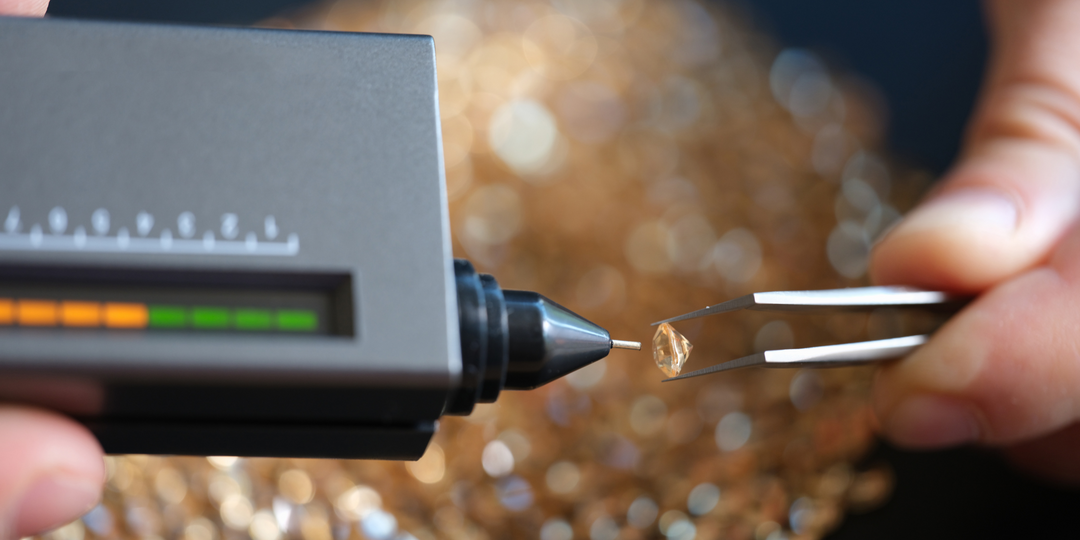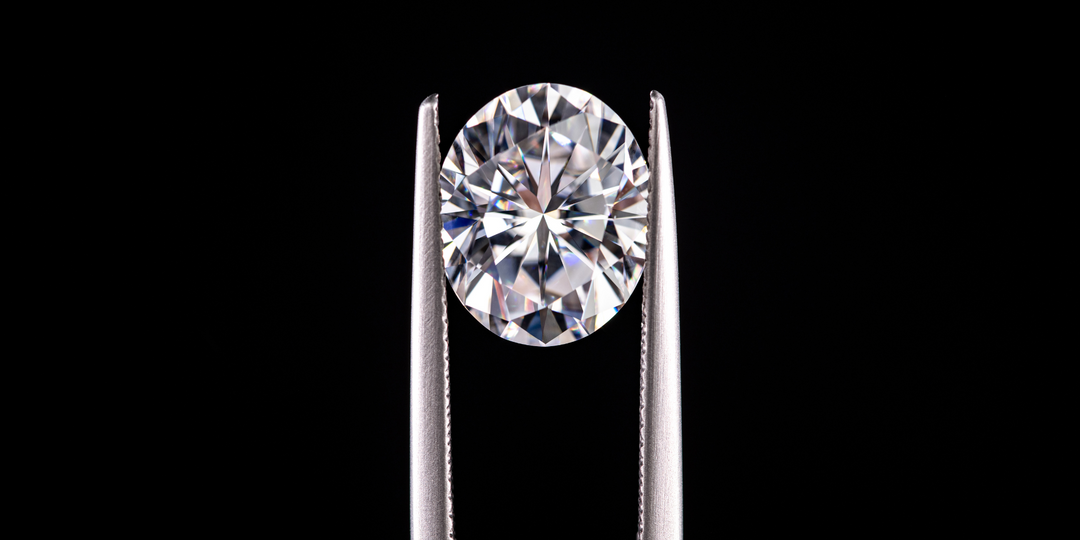Pear Shaped Engagement Ring: The Complete Guide
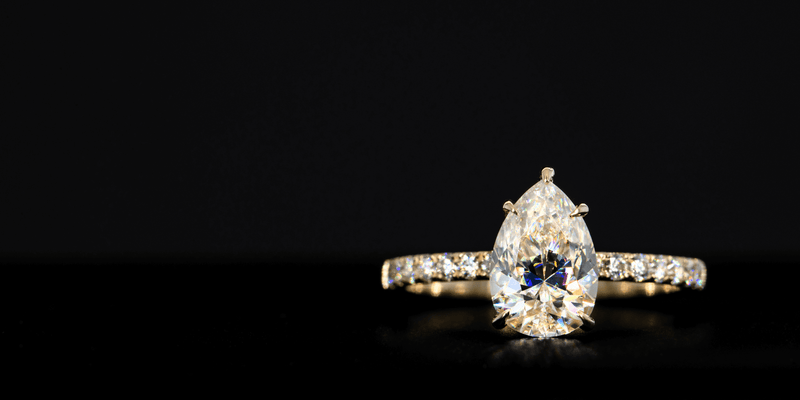
So you are thinking about a pear shaped engagement ring? Well, it might be an excellent choice! These beautiful rings, with their elegant teardrop shape, are making a serious comeback. They're a fantastic mix of classic and contemporary, perfect if you're looking for something that's both timeless and unique. They are also incredibly flattering on the hand, which is always a bonus!
Whether you're drawn to their vintage charm or their modern versatility, there's a pear shaped diamond out there for everyone. Let's dive into everything you need to know about these stunning stones, from their fascinating history to how to choose the perfect one for you.
The History of Pear Shaped Diamonds

Ever wonder where this distinctive shape came from? The pear cut, also known as the "pendeloque" or "teardrop," has a long history. It was first found in the 15th century, thanks to a clever Flemish diamond cutter named Lodewyk van Berquem. He invented the scaif, which is the polishing wheel allowing for much more precise faceting. This invention was a game changer and paved the way for the development of many diamonds including the pear diamond.
Before the scaif, diamond cutting was a much cruder process. Diamonds were often left in their natural octahedral form or only minimally shaped. Van Berquem's innovation allowed cutters to create more complex and symmetrical shapes, unlocking the full potential of a diamond's brilliance.
Now, early pear cuts weren't quite the beautiful gems we see today. They were more straightforward with fewer facets and often had a more elongated, less rounded shape. But over the centuries, as cutting techniques got more and more sophisticated, particularly with the development of the brilliant cut in the 17th century, the pear shape was refined, maximizing its brilliance and creating that elegant, elongated shape we all love. It is fascinating to think about how these stones have improved over time, reflecting the changing tastes and technological advancements of each era.
What Makes Pear Shaped Diamonds Unique?
What sets the peat shape apart? It is all about the attractive asymmetry. You have the rounded curve at one end, symbolizing a tear of joy flowing into a sharp point at the other. This creates a dynamic play of light. Imagine light dancing across the surface: the rounded end captures and reflects it in a brilliant burst, almost like a miniature sun. In contrast, the pointed end creates a graceful elongation that makes your finger look longer and more slender. It is like a little optical illusion!
Think of it this way: it's the best of both worlds. You get the brilliance of a round cut combined with the unique shape of a marquise. It's a real head-turner, offering a unique mix of elegance and modern flair. Plus, because of its elongated shape, a pear shaped diamond can often appear more significant than a round diamond of the same carat weight.
Characteristics of Pear Shaped Engagement Rings
When you are looking at pear shaped diamonds, there are a few key things to consider.
Length-to-width Ratio

Length-to-width ratio determines how elongated the diamond appears. The best length-to-width ratio for a pear shaped diamond is between 1.50 and 1.75. A ratio of 1.50 to 1.60 is considered classic and creates a balanced, symmetrical look, which is best for engagement rings. A ratio of 1.70 or higher results in a more elongated and slender shape, which makes the diamond look bigger on your hand. This can sometimes make it uncomfortable and is not able to be worn daily if you are willing to wear it daily.
Symmetry
Symmetry is paramount for a visually appealing pear shaped diamond. Ideally, the stone should exhibit mirror-image halves when viewed along its length, with the pointed tip aligning perfectly with the apex of the rounded end. The curves of the shoulders and wings should be smooth and symmetrical, avoiding any straight edges, and the rounded top should resemble a balanced semi-circle. Facet placement should be consistent on both sides, and the culet, or keel line, if present, should be centered.
This symmetry is crucial not only for aesthetic balance but also for optimal light performance, ensuring even reflection and maximizing brilliance. A diamond with poor symmetry can appear awkward and exhibit uneven light return. Therefore, seeking a symmetry grade of Excellent or Very Good from a reputable gemological laboratory like GIA or IGI is highly recommended.
Bow Tie Effect

This is a dark area that can appear across the center of some pear shaped diamonds. It's caused by light being blocked by the facets. Think of it like light passing through a prism: if the angles aren't perfect, you get shadows. In a well-cut pear, this bow tie effect should be minimal, but it's rarely completely absent. A slight bow tie is often acceptable and even adds character, but a very prominent one can detract from the diamond's brilliance.
Popular Settings for Pear Shaped Engagement Rings
Now, let's talk about settings! This is where you can personalize your ring and showcase your unique style.
Solitaire
This classic setting lets the pear shaped diamond take center stage. It's simple, elegant and shows off the stone's unique shape. A solitaire setting can be either a prong setting with 4 to 6 prongs for the pear shape or a bezel setting that encases the diamond in a metal rim. A bezel setting offers extra protection for the point of the pear compared to the solitaire setting which is its most vulnerable area.
Halo
A halo setting surrounds the center stone with smaller diamonds, adding extra sparkle and even making the pear appear larger. It's a great choice if you love a lot of sparkles or want to add a vintage touch; you can even have a double halo or a hidden halo for extra sparkle.
Three Stone
This setting features the pear shaped diamond flanked by two smaller side stones, creating a balanced and harmonious look. The side stones can be diamonds, lab grown diamonds, or Moissanite gemstones, adding a pop of color and personalizing the design. You can also look at tapered baguettes or trillions as side stones for a modern look.
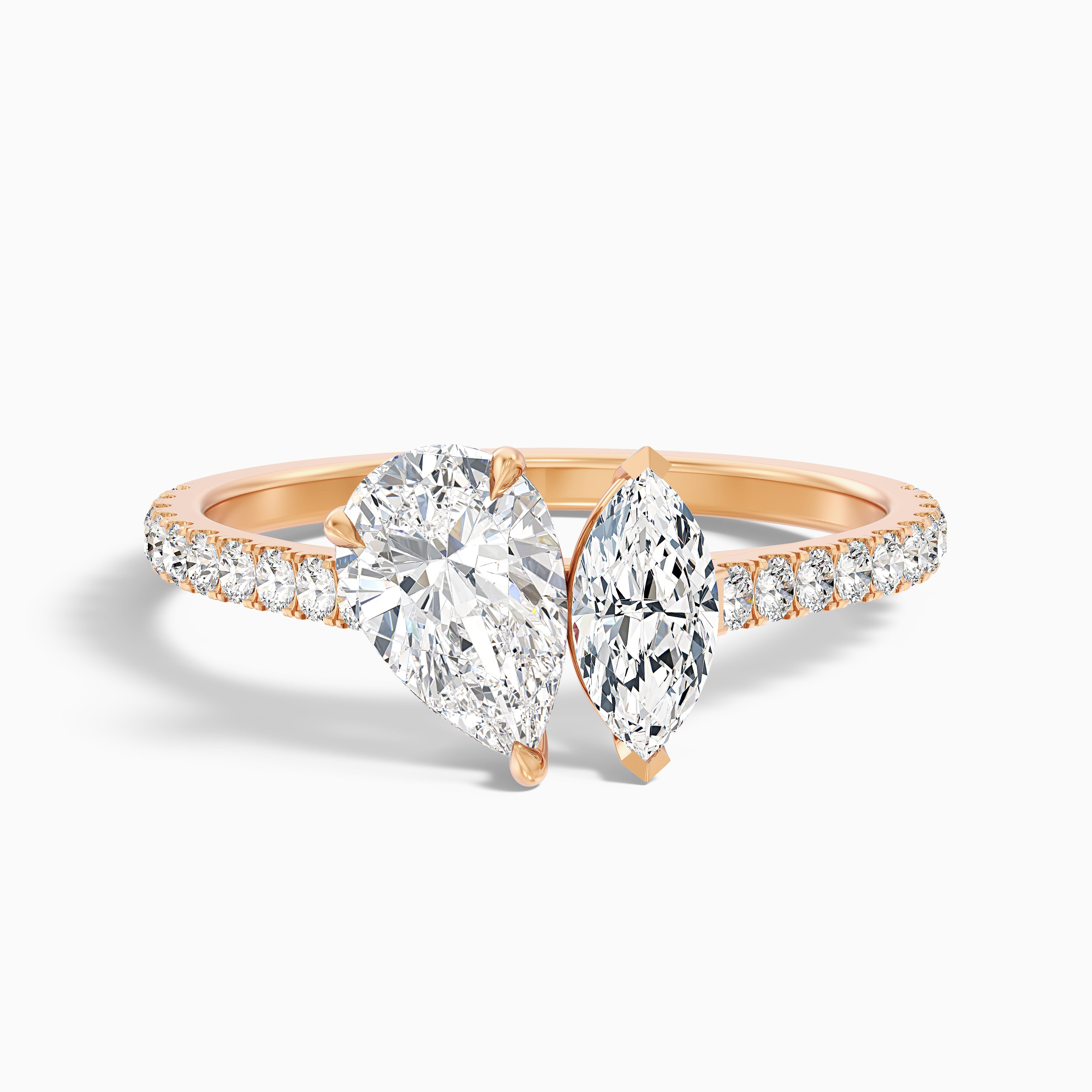 Customize Now
Customize Now
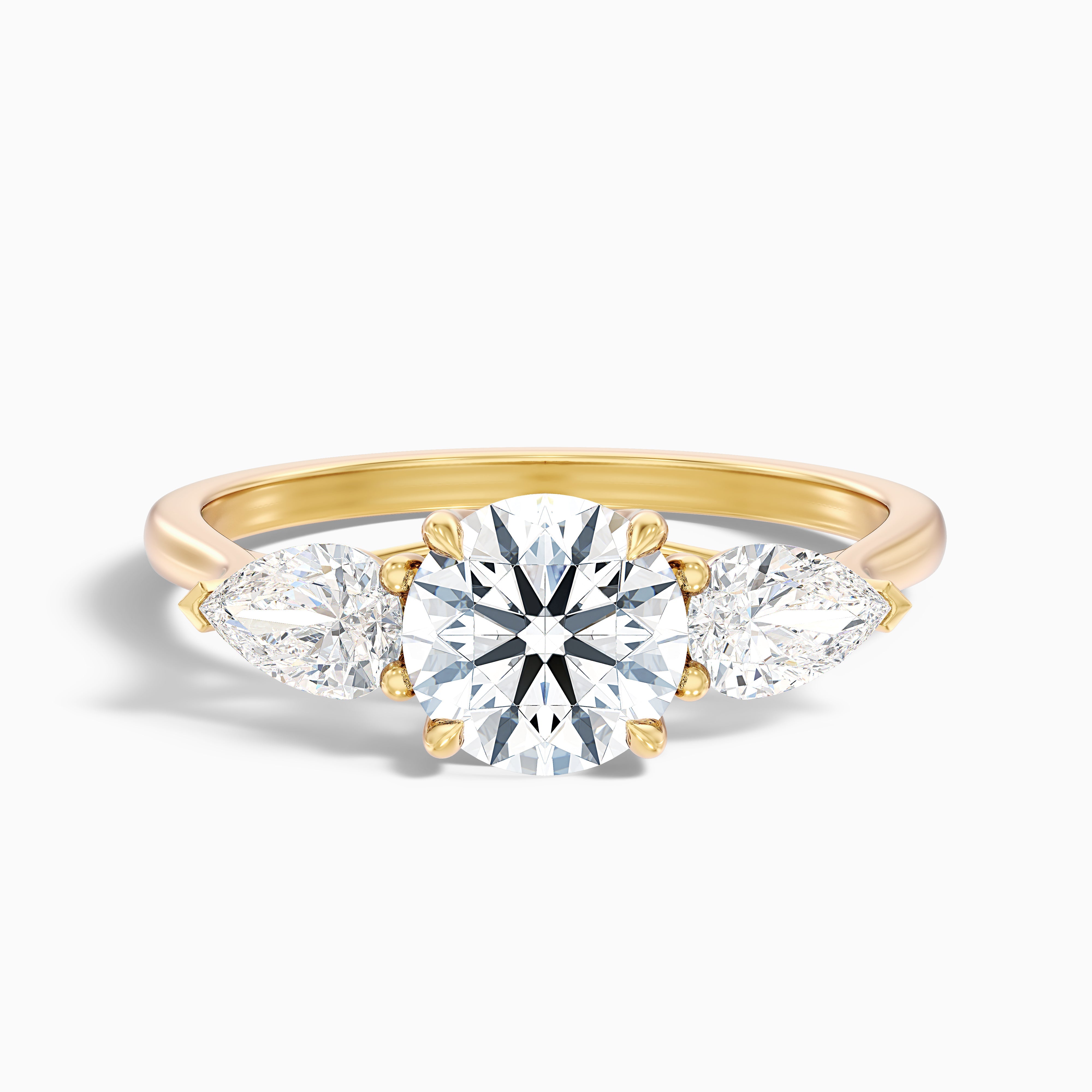 Customize Now
Customize Now
How to Choose the Perfect Pear Shaped Engagement Ring
There are some points to consider while choosing the perfect pear shaped engagement ring.
The Diamond
The diamond cut is the most crucial factor when selecting a pear shaped diamond ring. We always suggest and provide well-cut pear with good symmetry as this cut maximizes brilliance and fire.
As we discussed above, the ratio of 1.50 to 1.75 is generally considered ideal, but some people prefer a more elongated or wider shape. Pear shapes tend to show color more easily than round brilliants. If you choose a colorless look, then you should at least select G or higher color for the best color for your diamond. However, warmer tones can be beautiful, especially in yellow or rose gold settings.
Clarity grade is another critical factor that ensures the diamond is eye-clean with no visible inclusion to the naked eye. Since the point of pear can sometimes hide inclusions, you can go slightly lower in clarity than with other shapes. You can also go for SI1 or higher quality, not lower than that.
The Setting
Prongs are the most common setting for pear shapes, typically with 4 to 6 prongs protecting the point. If you want more protection, the best option is bezel settings, which offer extra protection to the ring.
Always suggest choosing a metal that complements the diamond's color and your personal preference. Platinum and gold enhance the overall look of colorless diamonds, while yellow or rose gold can create a warm and vintage feel.
Style is another factor to consider while choosing the ring because it affects the overall style of the ring. Solitaire settings showcase the diamond's unique shape, while pave or halo settings add extra sparkle. Three stone settings can also be beautiful, with the pear as the center stone.
Other Considerations
Pear shapes flatter the finger, making it appear longer and more slender. Consider the size of the diamond about the finger for optimal proportions. Ultimately, the perfect pear shaped engagement ring reflects the wearer's style and preferences.
Caring for a Pear Shaped Engagement Ring
Because of its pointed tip, a pear shaped diamond can be slightly more vulnerable to chipping. So, proper care is essential. Regular cleaning with mild soap and warm water is a must. Use a soft-bristled brush to remove dirt and grime gently. Avoid harsh chemicals and ultrasonic cleaners, which can damage the diamond or the setting. It's a good idea to have your ring professionally inspected every six months to a year to make sure everything is secure, especially the prongs holding the delicate point.
Conclusion
With their unique blend of elegance and brilliance, pear shaped engagement rings are a captivating choice for a symbol of lasting love. From their rich history, originating in the 15th century, to their versatile settings, these diamonds continue to enchant and inspire. Whether you prefer a classic solitaire or a more modern halo, a pear shaped diamond is sure to make a statement. So, if you're looking for something truly special, a pear shaped diamond might just be the perfect fit for you forever.

